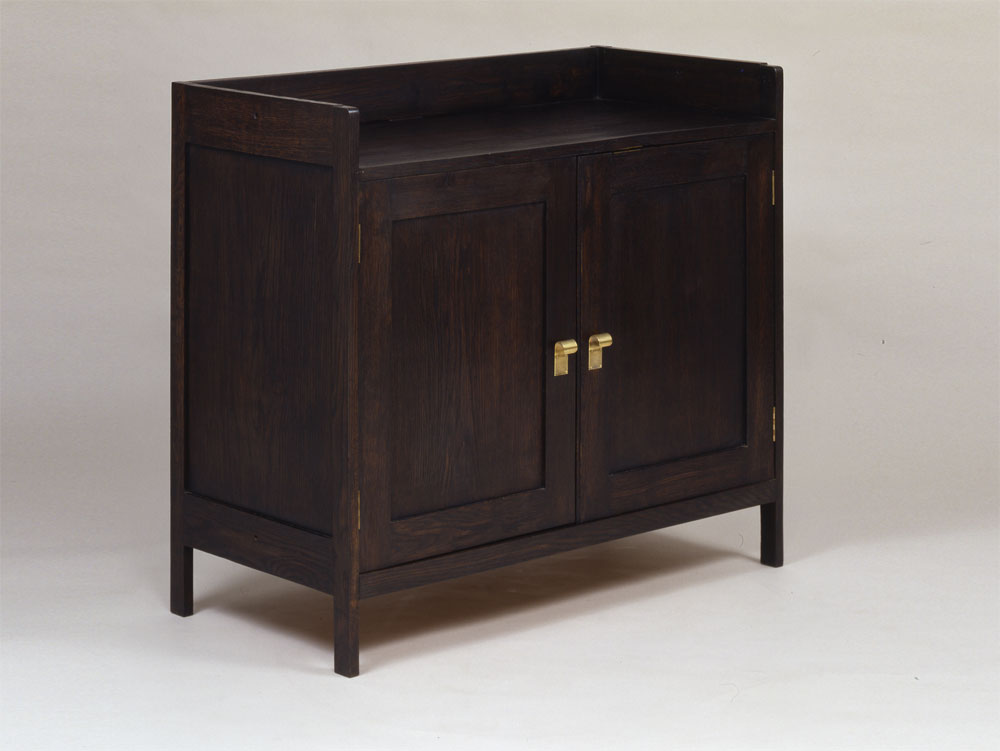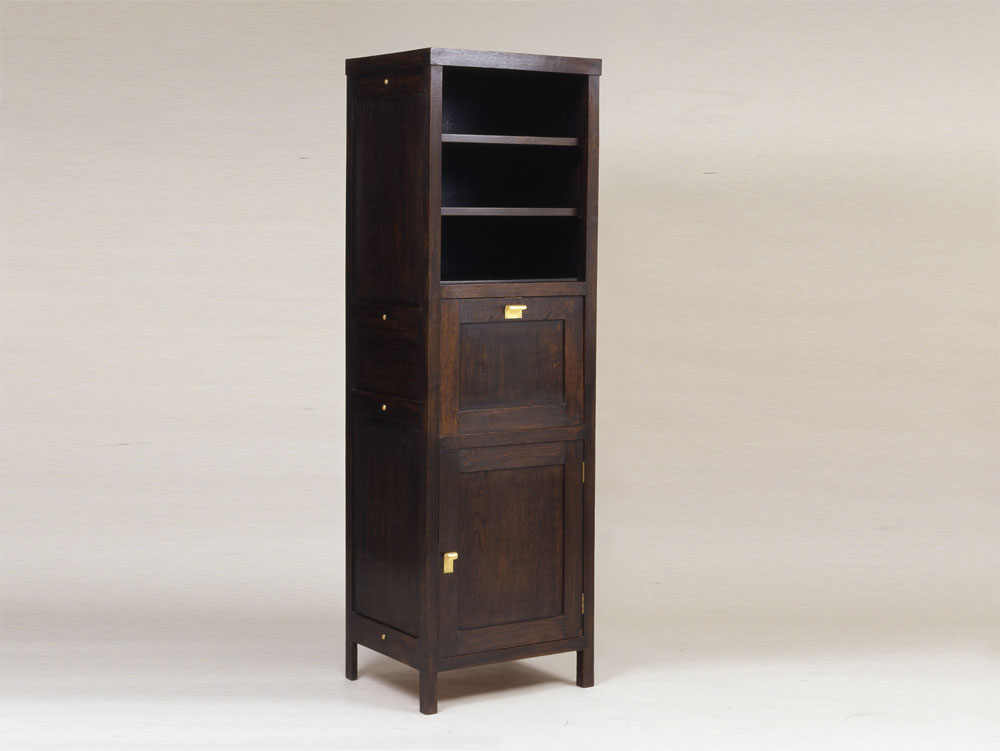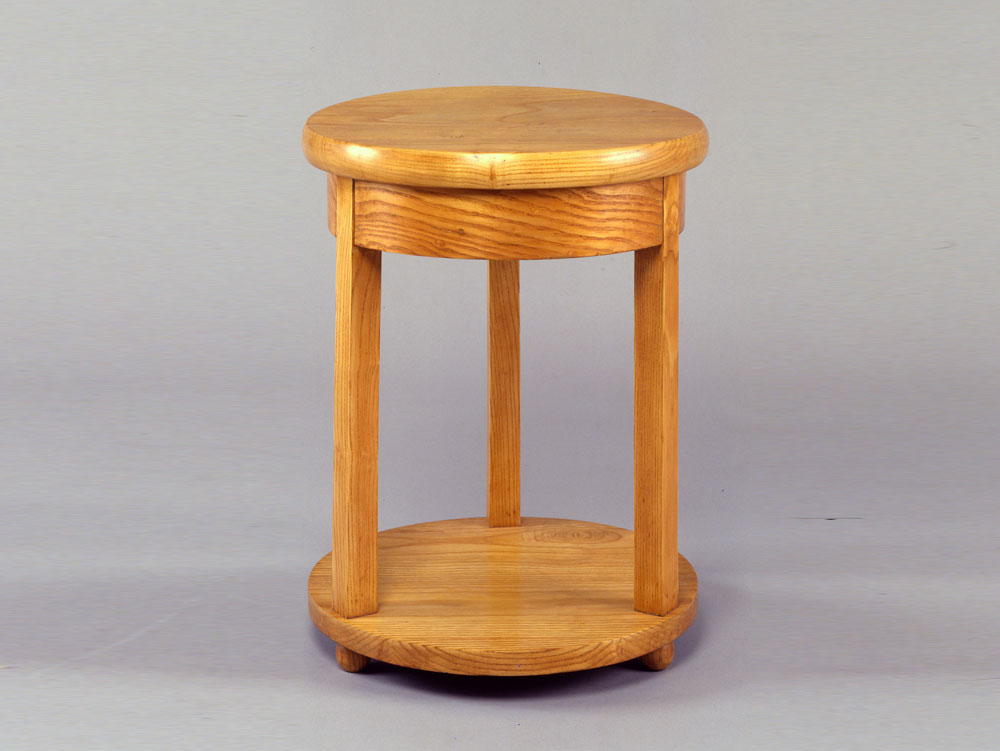
FRANCIS JOURDAIN
2nd November 1876 (Paris) – 31st December 1958 (Paris)
BIOGRAPHY
Painter, interior designer, creator of furniture and ceramics, writer, theoretician and humanist.
Son of the architect Frantz Jourdain, Francis Jourdain received training as an artistic glassworker, studied drawing and painting, spent time with the Nabis and presented his first drawings and paintings at the Druet gallery. In 1901, he was one of the founders of the Société́ de l’Art pour Tous – a group for aesthetic propaganda. In the Salon d’Automne of 1904, he exhibited a dresser which foreshadowed the coming series of interchangeable furniture and some pictures. He gradually abandoned the painter’s easel to focus on the creation of furniture and interior design. In 1911, at Esbly in Seine-et-Marne, he founded Les Ateliers Modernes which produced wooden furniture in understated shapes, whose components (tables, chairs, armchairs, bookcases, etc.) were combinable, interchangeable, which meant that they could be assembled one after the other, set out in all the areas of the accommodation, or even changing the layout by the arrangement of multifunction items, such as partition walls/bookcase/bench. Early on, he introduced new notions such as “decluttering” of interiors, interchangeability, modularity and the set, and sale by catalogue. Committed and radical for more humanism, this innovative furniture, with understated shapes took both taste and everyday needs into account; it was designed to be accessible whatever the size of your wallet. Combinable, it adapted easily to all room sizes and integrated into interior spaces like genuine extensions of the architecture. 1913 was a rich year for creations in furniture, interior design, and decors for his friends Jacques Copeau and André́ Antoine who were theatre renovators. At the same time, he carried out various interior design projects for offices and boutique shops such as the offices of the Lazare Lévy lighting company in 1917, Éditions Crès (1924) or Claridge’s shop (1925).
A subscriber to the theories of the Viennese Adolf Loos, stated in the famous Ornement et Crime, the understatement, or even severity, of his sets was tempered by coloured ceramics, carpets, glasswork and fabrics, and painted papers that he also designed, exhibited and sold in his boutique Chez Francis Jourdain, opened at 2 rue de Sèze in Paris, in 1919.
Still in pursuit of innovation, the presentation of an amazing nursery at the Salon d’Automne demonstrated from 1920 his willingness to apply his modern concepts and adapt them to children’s bedrooms and their toys, endeavouring thus to create for them an environment that was both rational and hygienic. He created a second nursery at the request of Mme James de Rothschild, thus confirming the adaptation of his principles to the creation of a world for a child. He benefited from a varied clientele, carried out numerous outfitting projects for friends like George Besson and worked with numerous producers, such as “À la Place de Clichy”, producer of his carpets and of a dining room, la Maison Tricotel for which he designed garden furniture, Société Messidor, and also Abel Motté, exclusive producer of his chairs from 1920 onwards and of one of his dining rooms.
It was in 1922, at the Salon d’automne that he became friends with Pierre Chareau, Gabriel Guévrékian and Robert Mallet-Stevens with whom he worked subsequently. He participated in the decoration of the Villa Noailles in Hyères, built by Mallet-Stevens for the Vicomte Charles de Noailles in 1925.
At the International Exhibition of Modern Decorative and Industrial Arts in Paris, he received two important orders. One came from the Paris-Orléans railway company which commissioned him to design a smoking wagon, the other from the Pavillon du Salon des Artistes Décorateurs, with a smoking room and an exercise room for the French embassy.
It was at the same time that the idea of the “Bazaar” appeared in his speech, a recurrent concept in his writing. Tired of seeing individual items intended for the elite and overloaded with dated ornamentation presented at the great international and universal exhibitions, Jourdain decided to suggest to the organisers an alternative to this situation, which presently seemed unbearable to him. After hearing visitors compare these exhibitions to vast bazaars, he put forth the idea of a “bazaar of everyday household objects” presenting “good and beautiful objects” that would be accessible to most people. This idea, which would not be taken up, constituted one of the theoretical bases that led to the formation of the formes utiles category.
A year later, he opened a workshop at his home, 26 rue Vavin. He was forced to cease production of his furniture sold by subscription voucher and focused primarily on interior design for individuals.
During 1926-1927, he renovated an apartment for Mr Robert Draeger, and renovated another in 1928, for René Gas. He also carried out the interior layout work for the homes of some of his friends and relatives such as the sculptor Jan Martel, the sculptor Chana Orloff, his son Frantz-Philippe, the fabric creator Hélène Henry (1927) and even the architect Robert Mallet-Stevens (1927), for whom he designed numerous furniture items.
In 1929, as a member of the first steering committee of the UAM, he took part in the first exhibition of the group at the Pavillon de Marsan; he exhibited no furniture but small animal sculptures in folded sheet metal instead. Little by little he stopped exhibiting but participated in office layouts for the La Semaine à Parismagazine with Pierre Chareau, Robert Mallet-Stevens, Charlotte Perriand, René Herbst, etc.
His last productions were among the most important. The first was the collection presented at the Pavilion of the UAM at the international exhibition of 1937 in Paris. The heading “model home for a manual or intellectual worker”, was in line with the social preoccupations that had always driven him. The second was an order which included the complete outfitting of the of the director of the Collège de France in 1938.
The following year, Francis Jourdain ceased his activity as a creator of furniture and focused almost exclusively on his political and community commitments and on his work as a critic and writer. He made a start on writing his memoires divided into three separate volumes: “Né en 76”, “Sans remords ni rancune”, and “Jours d’alarme” (“Born in ‘76”, “Without regret or resentment” and “Days of Alarm”).
In 1948, he was appointed president of the Club Mallet-Stevens and honorary president of the UAM. Pioneer and unifier, he played an active role in the establishment of a French modern movement. He devoted the end of his life to the writing of his memoires, and to writing the monographs of painters: Lautrec, Cézanne, Bonnard, etc. and, faithful to his commitments, to social works, particularly to Secours Populaire of which he was the first President.
He died in Paris on 31st December 1958.



